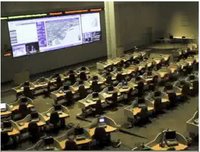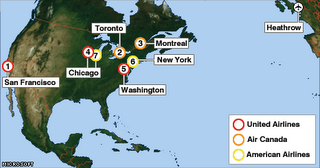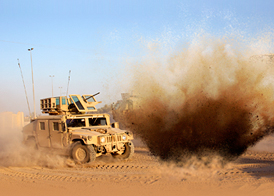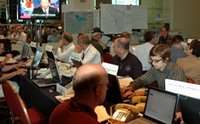Yes We Are Safer
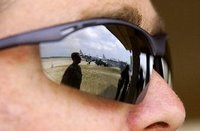
Clarke, the official in charge of antiterrorism efforts before 9/11, commemorated the anniversary of the attacks by publishing a finger-pointing screed in U.S. News and World Report.
Clarke’s argument went something like the following: Here we are, seven years after 9/11. We haven’t been attacked. But we could be. Al Qaeda still exists, Bin Laden remains at large, and terrorists still commit terrorism. We’re backsliding, and no safer now then we were then. On the home front, our borders are still porous, we’re still not screening people, and security grants are too much about pork and not enough about real risk.
Clarke is mostly wrong.
Today, al Qaeda no longer has a state sponsor. Contrary to Clarke’s claims, most of its original leadership has been captured or killed. It is losing in Iraq -- thanks to the surge and to the Awakening movement among the Sunni tribes--and its savage attacks on innocents have reduced its popularity there and across the Muslim world. Muslim scholars and clerics are increasingly condemning its beliefs and behavior as a desecration of Islam.
This progress has come because we abandoned the practice of treating terrorism solely as a criminal matter – exactly the kind of September 10 policy that Clarke celebrates in his article.
Closer to home, the Department of Homeland Security has made clear progress that belies Clarke’s claims.
At the border that Clarke thinks is so porous, DHS has built hundreds of miles of fence and will double the size of the Border Patrol. We’ve also deployed fingerprint-based screening and radiation portal monitors at all of our border entry points.
To protect against a repeat attack, DHS has built nearly two dozen layers of security into our aviation system, and it has developed comprehensive security plans for other critical infrastructure.
Clarke claims that the executive branch has proved incapable of managing new terrorism programs to success. Tell that to US-VISIT – a massive government IT project that compares fingerprints of travelers to a database of millions and does it in 30 seconds for officials all across the country and the world. We got it up and running from scratch, despite the doubters. And it’s so successful that we’re expanding it to collect all ten prints and to compare them to prints found in terrorist safe houses around the world. We’ve done all that since Dick Clarke left government – and without a word of support from him.
Despite his claims of backsliding, it’s DHS that has been battling complacency, and Clarke who seems to have been sitting on the sidelines.
We’re the ones who’ve been fighting for the carefully targeted, risk-based homeland security grants he favors. It’s Congress that has added billions and made them less risk-based. Has Clarke criticized Congress or praised DHS for our risk based approach? If so, I missed it.
On our southern border, DHS’s fence-building and increased border enforcement have been hampered by local NIMBY (“not-in-my-backyard”) forces and advocates for illegal immigration. Did Dick Clarke speak out against them? Not so I’ve noticed.
To secure our northern border, we’re implementing tougher document standards, and we were ready to require all travelers to produce a passport or passport-equivalent by the end of this year. Where was Dick Clarke when Congress decided to push back that deadline to mid-2009? I don’t remember an op-ed then complaining about how porous this would make our Canadian border.
Clarke says that terrorists who look European have been trained by al Qaeda and may have European Union passports and clean identities unknown to intelligence agencies. He thinks such people could enter the United States almost as easily as did the 9/11 hijackers. It’s indeed true that during Dick Clarke’s tenure, Europeans could come to the US without any opportunity to screen them before they were in the air. As of this January, though, no foreign travelers other than Canadians will be able to come to the US without supplying -- in advance -- the information we need to screen them. At last, we’ll have the time and information we need to investigate risky travelers (and to prepare a rude surprise for terrorists who try this route). That’s all happened since Dick Clarke left government, and without any support from him.
There’s no question that Dick Clarke contributed to strengthening our national security, but his recent assertions are not only incorrect, they disrespect the work of many national security professionals he once called colleagues. That is indeed unfortunate.
Stewart Baker
Assistant Secretary for Policy
Labels: 9/11, About the Department, CBP, counterterrorism, fence, information sharing, infrastructure protection, port security, preparedness, screening, security, strength, travel security, TSA, US-VISIT
